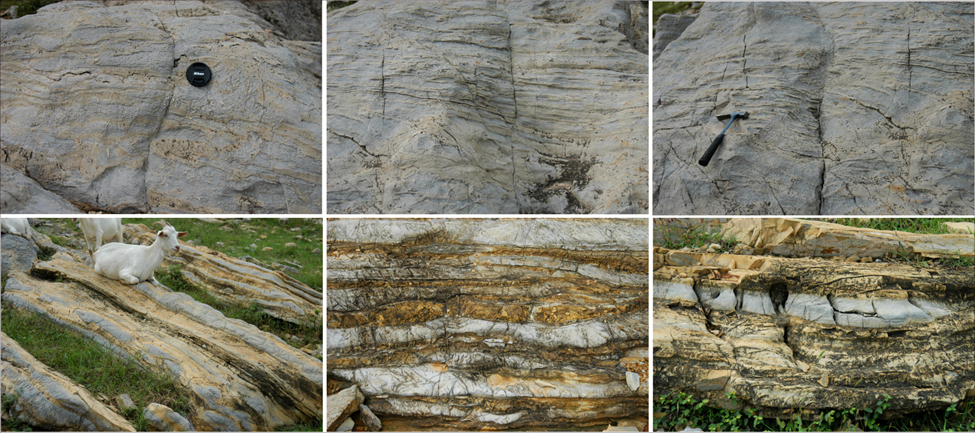Niyuan Fm
Type Locality and Naming
North Anhui – Jiangsu border region. The Niyuan Fm was named by the Jiangsu and Anhui Parties of Regional Geological Survey in 1976 and was formally published on the Guidebook of 1: 200000 Scale Geological Map of Xuzhou Sheet in 1978. The typical section is situated at Niyuan village of Tongshan County, Jiangsu Province.
Synonym: (倪园组)
Lithology and Thickness
The Niyuan Formation is subdivided into two parts. Lower part is composed of gray thin- to medium-bedded dolomite intercalated with stromatolitic dolomite, dolomitic limestone intercalated with edgewise dolorudite with micro-beddings. Upper part is yellowish gray and purple gray, thin- to medium-bedded pelitic dolomite bearing siliceous bandings and nodules. The Niyuan Formation is characterized by fine flat-beddings, rich cherty nodules and bandings. The thickness varies from 138 to 401 m.
[Figure: Limestone with molar tooth structures in the Niyuan Formation, Jiangsu Proivnce]
Relationships and Distribution
Lower contact
The basal part rests conformably on the underlying Zhaowei Fm.
Upper contact
The Niyuan Fm is conformably overlain by the Jiudingshan Fm
Regional extent
North Anhui – Jiangsu border region. It is mainly distributed in Shendian, Zhaowei of Tongshan, Lanshan of Suining County (Jiangsu) and Xieji, Lingbi of Suzhou City (Anhui Province).
GeoJSON
Fossils
The lower part yields stromatolites: Inzeria f., Minjaria f., Tunggussia f., Baicalia f. Microplants: Asperatopsophosphaera cf. umishanensis, A. umishanensis, Dictyosphaera sp., Laminarites antiquissimus, Leiopsophosphaera densa, Lopho- minuscula minuta, L. prima, Margominuscula sp., Trachysphaeridium planum, T. simplex, Paleomorpha figurata, Polyporata sp., Taeniatum crassum, Trematosphaeridium sp., Eoentophysalis yudomatica, Gloeodiniopsis lamellosa, Globophycus rugosum, Siphonophycus sp., Myxococcoides sp., Eomycetopsis sp. etc.
Age
Depositional setting
Additional Information
